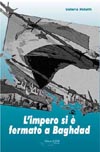BAGHDAD, Oct. 10 — A team of American and Iraqi public health researchers has estimated that 600,000 civilians have died in violence across Iraq since the 2003 American invasion, the highest estimate ever for the toll of the war here.
The figure breaks down to about 15,000 violent deaths a month, a number that is quadruple the one for July given by Iraqi government hospitals and the morgue in Baghdad and published last month in a United Nations report in Iraq. That month was the highest for Iraqi civilian deaths since the American invasion.
But it is an estimate and not a precise count, and researchers acknowledged a margin of error that ranged from 426,369 to 793,663 deaths.
It is the second study by researchers from the Johns Hopkins Bloomberg School of Public Health. It uses samples of casualties from Iraqi households to extrapolate an overall figure of 601,027 Iraqis dead from violence between March 2003 and July 2006.
The findings of the previous study, published in The Lancet, a British medical journal, in 2004, had been criticized as high, in part because of its relatively narrow sampling of about 1,000 families, and because it carried a large margin of error.
The new study is more representative, its researchers said, and the sampling is broader: it surveyed 1,849 Iraqi families in 47 different neighborhoods across Iraq. The selection of geographical areas in 18 regions across Iraq was based on population size, not on the level of violence, they said.
The study comes at a sensitive time for the Iraqi government, which is under pressure from American officials to take action against militias driving the sectarian killings.
In the last week of September, the government barred the central morgue in Baghdad and the Health Ministry — the two main sources of information for civilian deaths — from releasing figures to the news media. Now, only the government is allowed to release figures. It has not provided statistics for September, though a spokesman said Tuesday that it would.
The American military has disputed the Iraqi figures, saying that they are far higher than the actual number of deaths from the insurgency and sectarian violence, in part because they include natural deaths and deaths from ordinary crime, like domestic violence.
But the military has not released figures of its own, giving only percentage comparisons. For example, it cited a 46 percent drop in the murder rate in Baghdad in August from July as evidence of the success of its recent sweeps. At a briefing on Monday, the military’s spokesman declined to characterize the change for September.
The military has released rough counts of average numbers of Iraqis killed and wounded in a quarterly accounting report mandated by Congress. In the report, "Measuring Stability and Security in Iraq," daily averages of dead and wounded Iraqi civilians, soldiers and police officers rose from 26 a day in 2004 to almost 120 a day in August 2006.
The study uses a method similar to that employed in estimates of casualty figures in other conflict areas like Darfur and Congo. It sought to measure the number of deaths that occurred as a result of the war.
It argues that absolute numbers of dead, like morgue figures, could not give a full picture of the "burden of conflict on an entire population," because they were often incomplete.
The mortality rate before the American invasion was about 5.5 people per 1,000 per year, the study found. That rate rose to 19.8 deaths per 1,000 people in the year ending in June.
Gunshots were the largest cause of death, the study said, at 56 percent of all violent deaths, while car bombs accounted for about 13 percent. Deaths caused by the American military declined as an overall percentage from March 2003 to June 2006.
Violent deaths have soared since the American invasion, but the rise is in part a matter of spotty statistical history. Under Saddam Hussein, the state had a monopoly on killing, and the deaths of thousands of Iraqi Shiites and Kurds that it caused were never counted.
While the near collapse of the Iraqi state makes precise record-keeping difficult, authorities have made considerable progress toward tracking death figures. In 2004, when the Johns Hopkins study was first released, authorities were still compiling deaths on an ad hoc basis. But by this year, they were being provided regularly.
Iraqi authorities say morgue counts are more accurate than is generally thought. Iraqis prefer to bury their dead immediately, and hurry bodies of loved ones to plots near mosques or, in the case of Shiites, in sacred burial sites. Even so, they have strong incentives to register the death with a central morgue or hospital in order to obtain a death certificate, required at highway checkpoints, by cemetery workers, and for government pensions. Death certificates are counted in the statistics kept by morgues around the country.
The most recent United Nations figure, 3,009 Iraqis killed in violence across the country in August, was compiled by statistics from Baghdad’s central morgue, and from hospitals and morgues countrywide. It assumes a daily rate of about 97.
The figure is not exhaustive. A police official at Yarmouk Hospital in Baghdad who spoke on the condition of anonymity said he had seen nationwide counts provided to the hospital that indicated as many as 200 people a day were dying.
Gilbert Burnham, the principle author of the study, said the figures showed an increase of deaths over time that was similar to that of another civilian casualty project, Iraq Body Count, which collates deaths reported in the news media, and even to that of the military. But even Iraq Body Count puts the maximum number of deaths at just short of 49,000.
As far as skepticism about the death count, he said that counts made by journalists and others focused disproportionately on Baghdad, and that death rates were higher elsewhere.
"We found deaths all over the country," he said. Baghdad was an area of medium violence in the country, he said. The provinces of Diyala and Salahuddin, north of Baghdad, and Anbar to the west, all had higher death rates than the capital.
Statistics experts in the United States who were able to review the study said the methods used by the interviewers looked legitimate.
Robert Blendon, director of the Harvard Program on Public Opinion and Health and Social Policy, said interviewing urban dwellers chosen at random was "the best of what you can expect in a war zone."
But he said the number of deaths in the families interviewed — 547 in the post-invasion period versus 82 in a similar period before the invasion — was too few to extrapolate up to more than 600,000 deaths across the country.
Donald Berry, chairman of biostatistics at M. D. Anderson Cancer Center in Houston, was even more troubled by the study, which he said had "a tone of accuracy that’s just inappropriate."
Sabrina Tavernise reported from Baghdad, and Donald G. McNeil Jr. from New York.

|


















